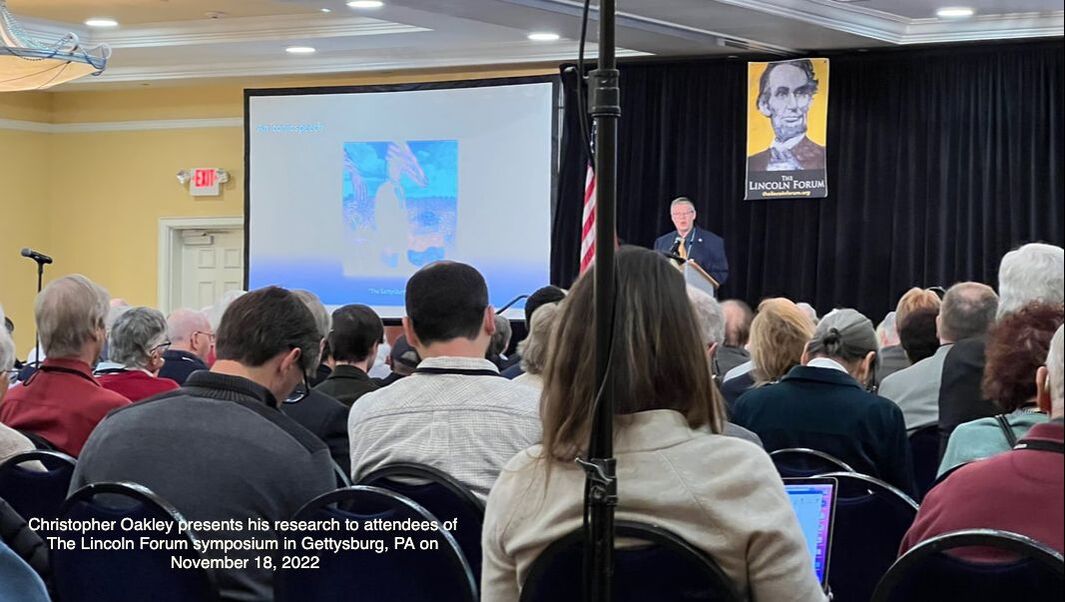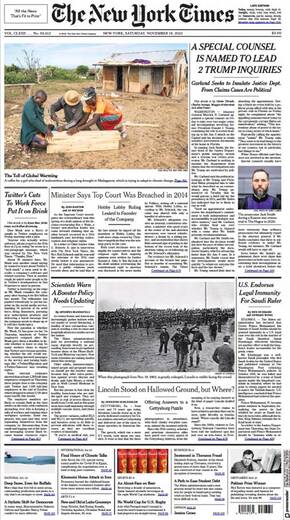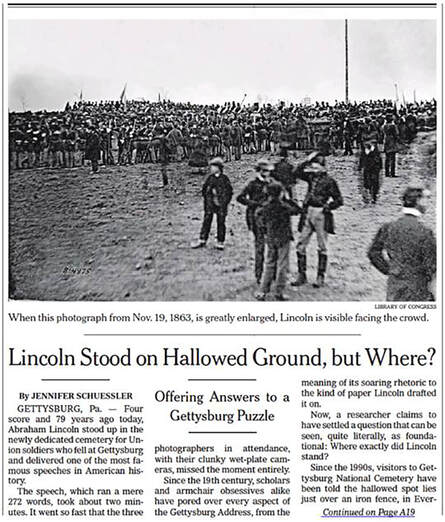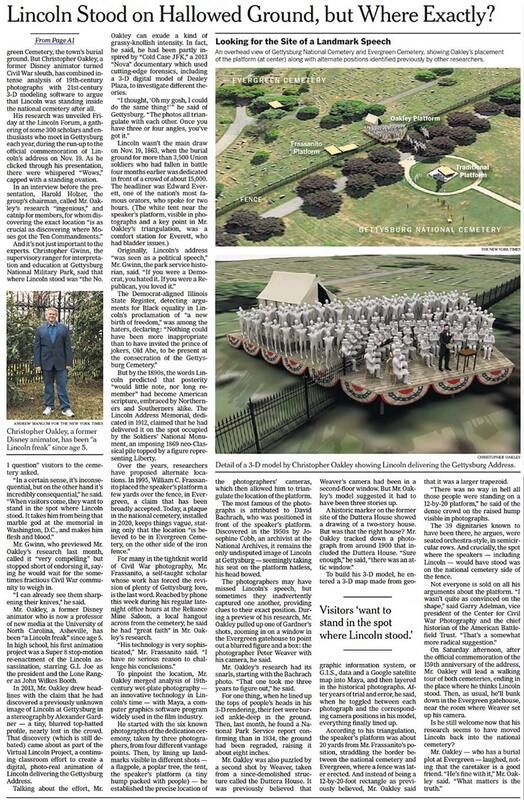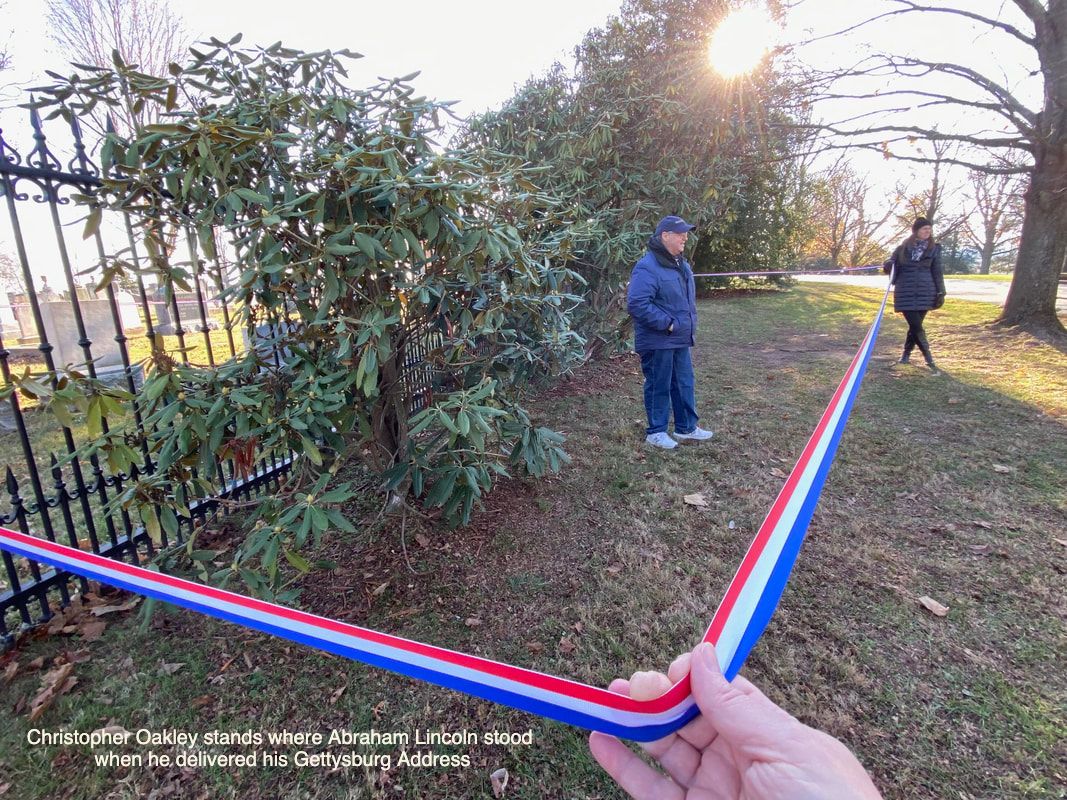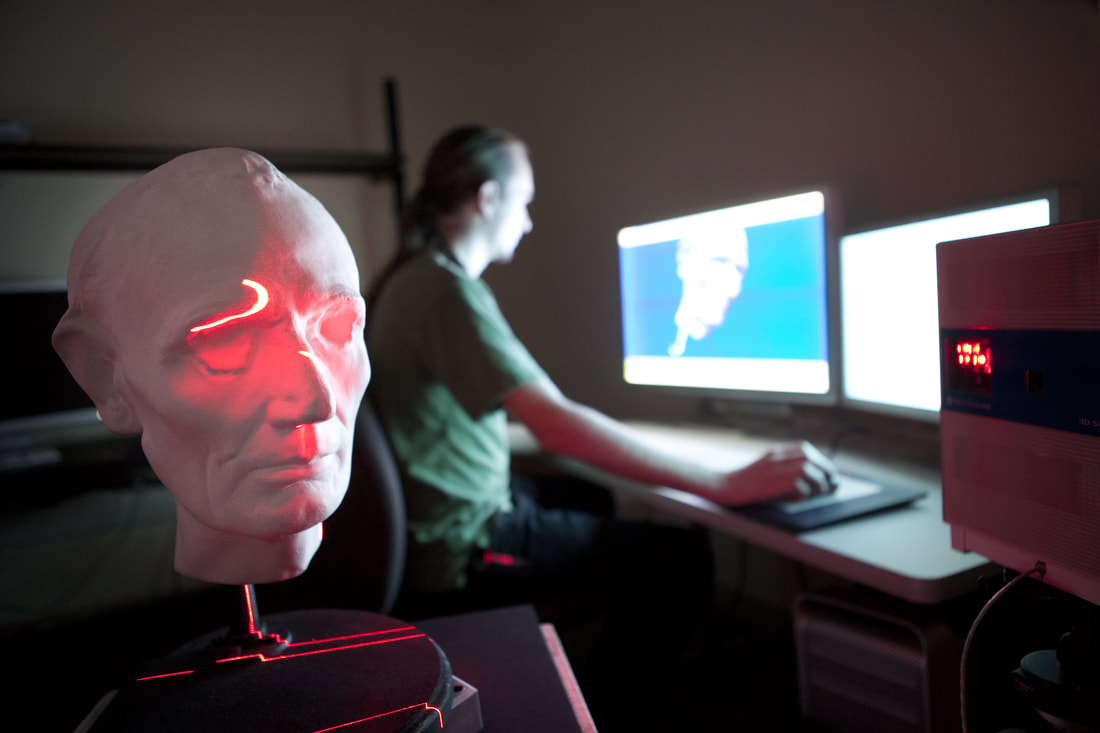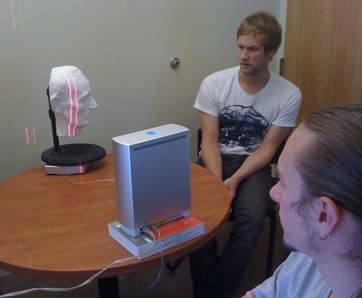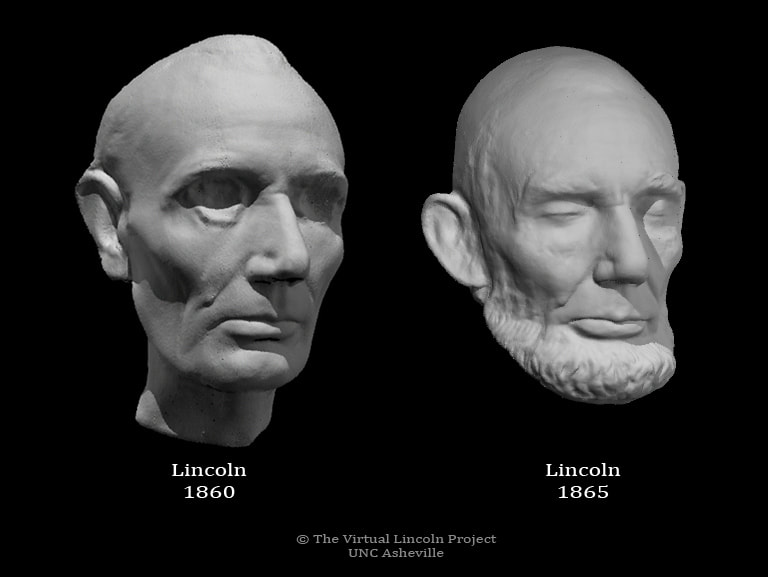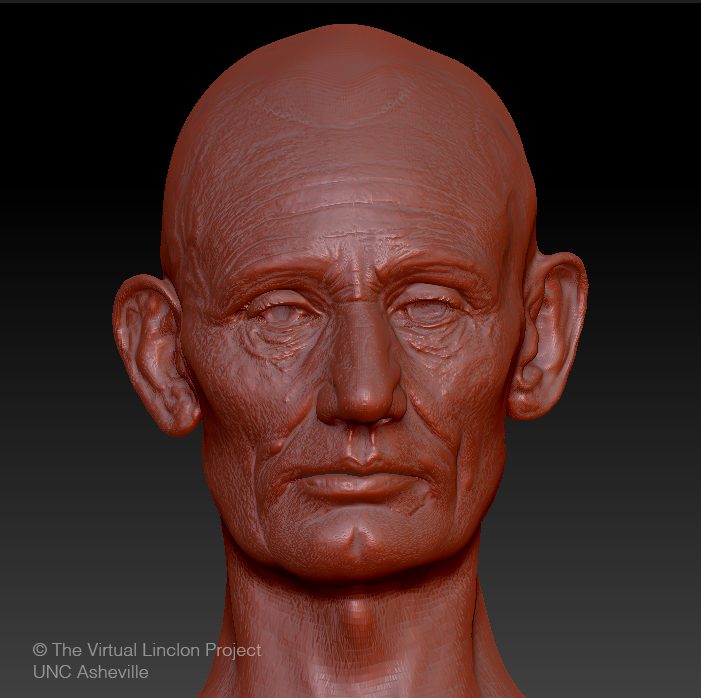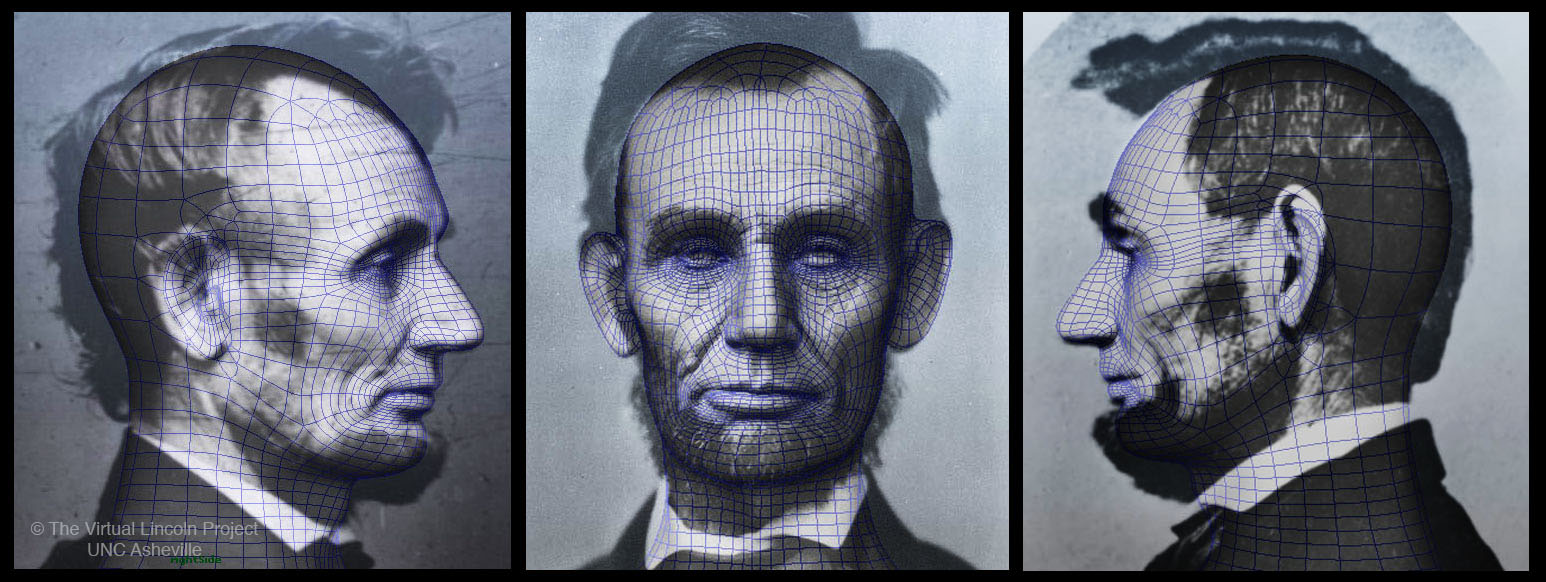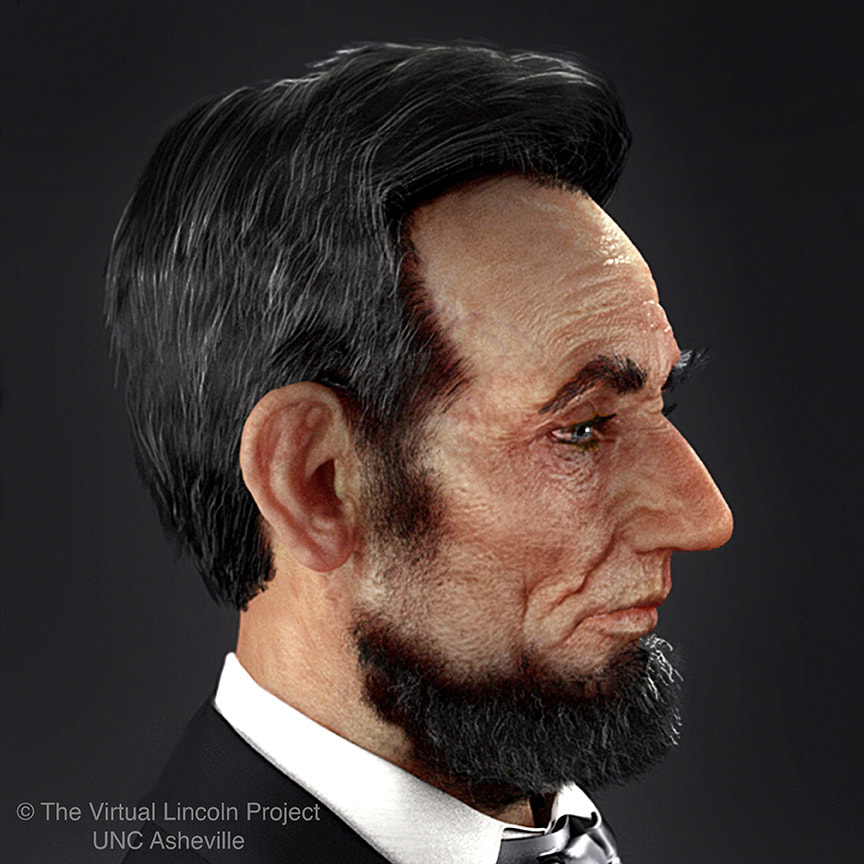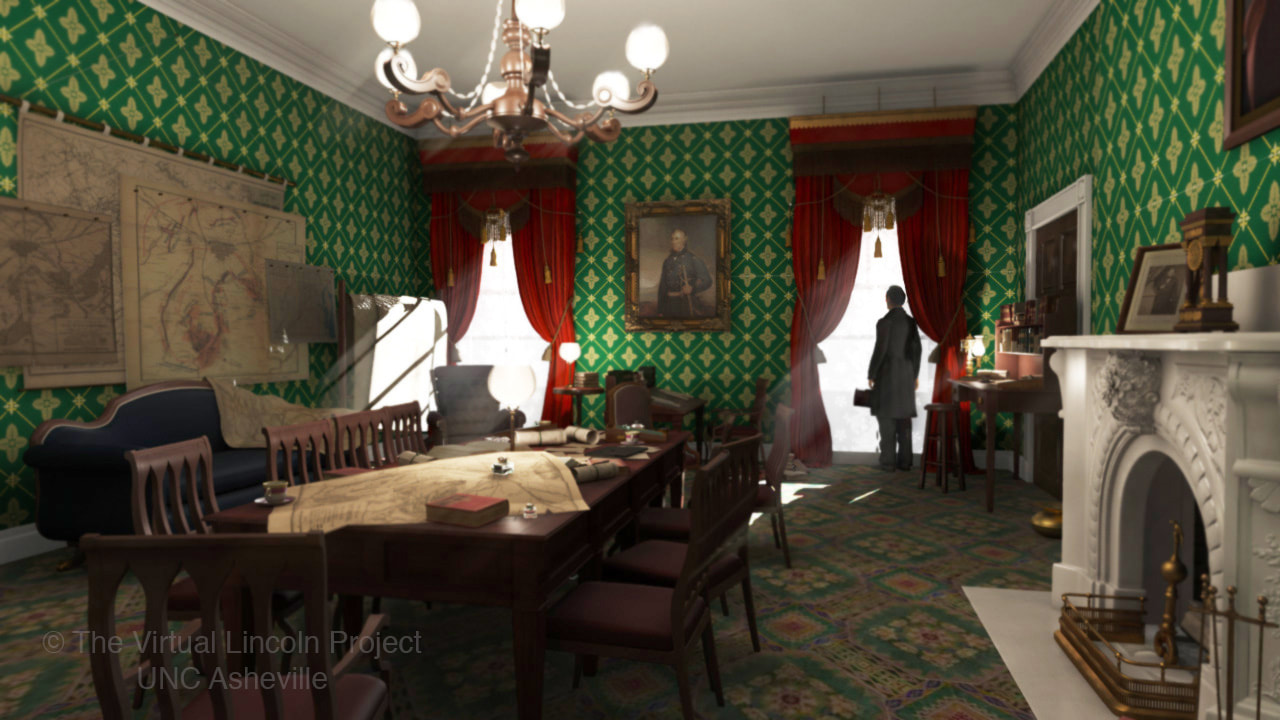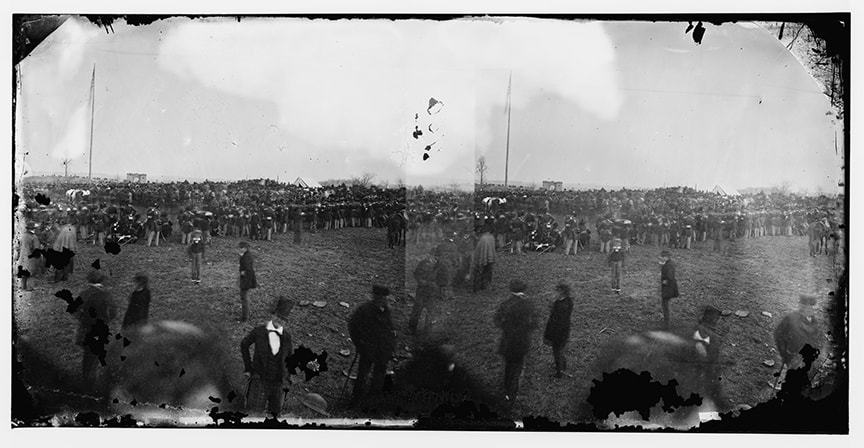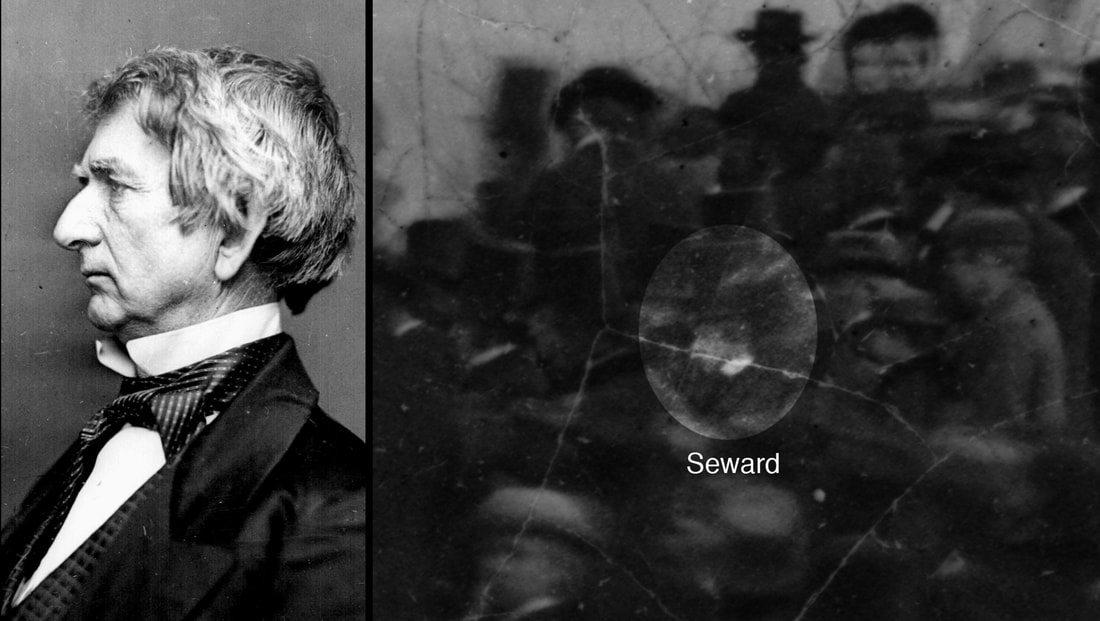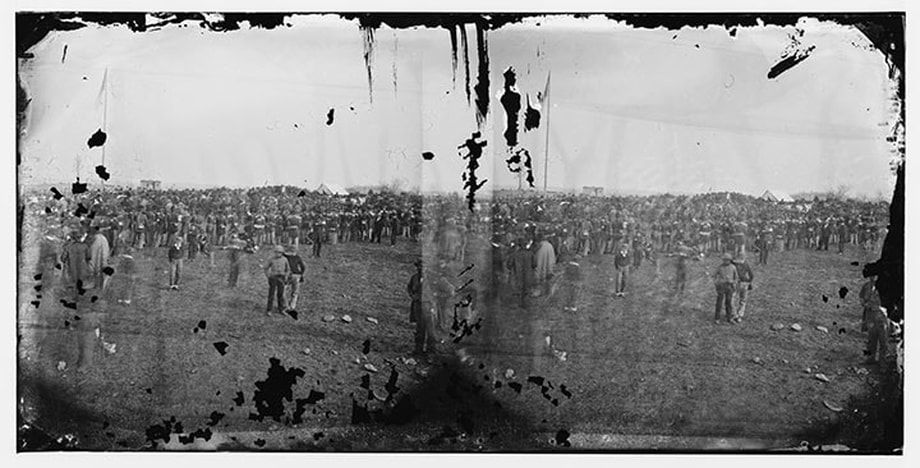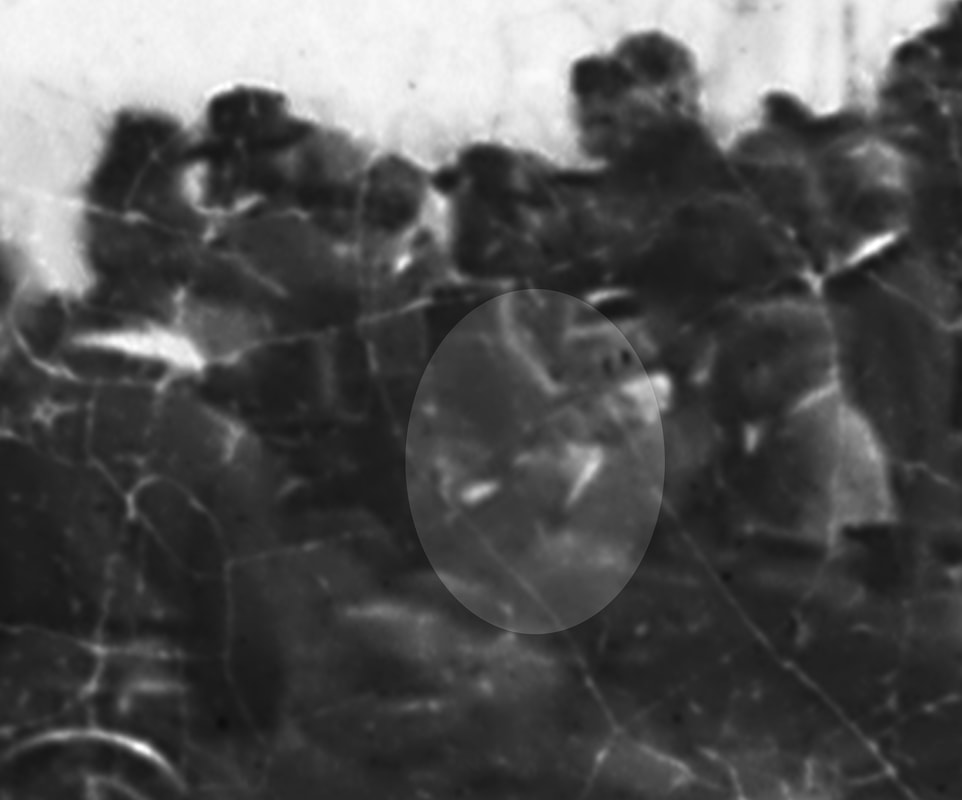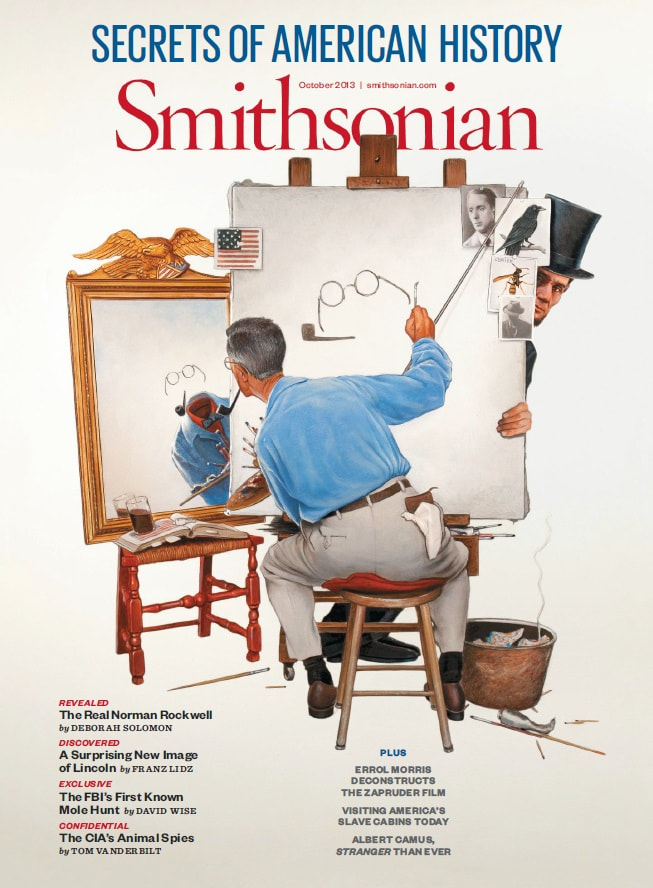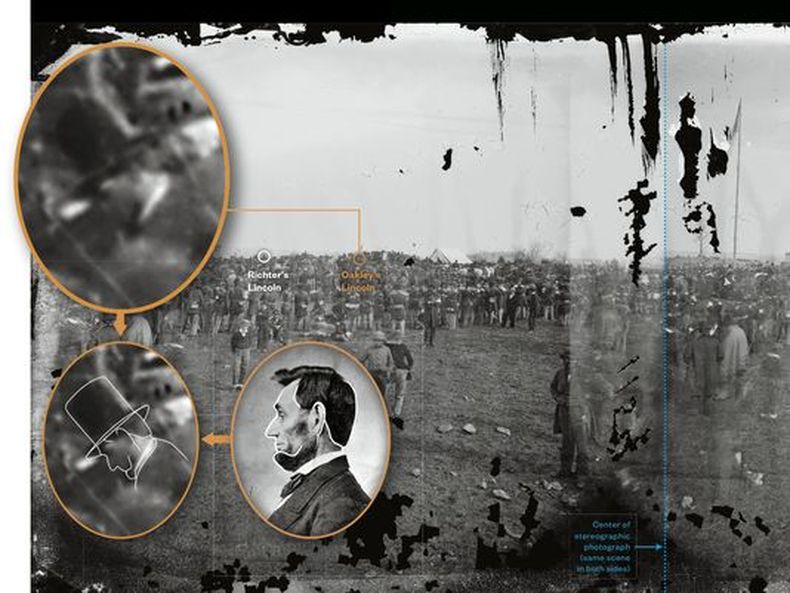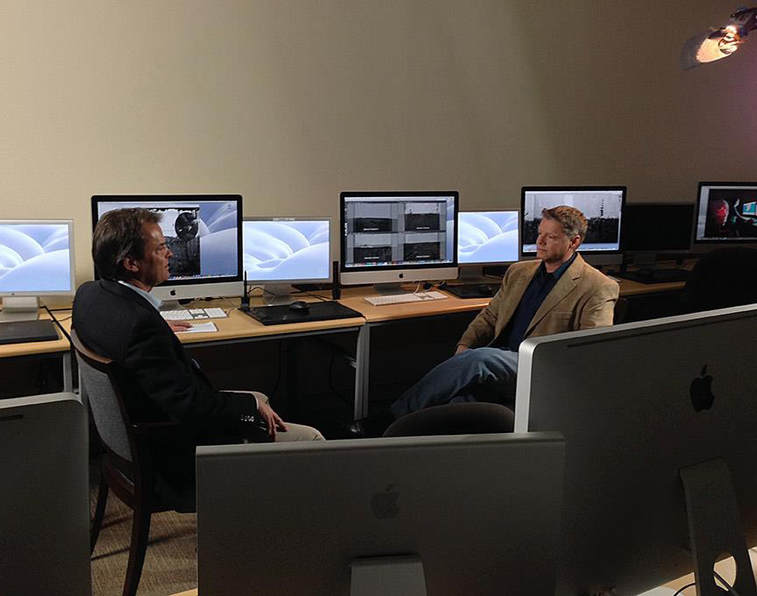Christopher Oakley's Research
Location of the Gettysburg Address
Christopher Oakley has been researching Abraham Lincoln for most of his life. At a recent gathering of The Lincoln Forum in Gettysburg, PA, Christopher announced the results of nearly a decade of research into where Abraham Lincoln actually stood when he delivered his Gettysburg Address on November 19, 1863. The actual location has been unknown for 159 years.
By marrying 19th Century analog materials with 21st Century 3D digital tools, Christopher pinpointed the size, shape, and location of the speaker's stand on which Lincoln stood as he dedicated what is now the Gettysburg National Cemetery. Christopher's announcement that the speaker's stand straddled the border between Evergreen Cemetery and the National Cemetery and that Lincoln both sat and stood within the cemetery he was consecrating was well-received and made the front page of the New York Times on November 19, 2022.
On Saturday, November 19th — the 159th anniversary of the Gettysburg Address — Christopher led an informal tour of both Evergreen Cemetery and the Gettysburg National Cemetery to point out where the 19th Century photographers who captured the event were stationed. The tour concluded with Christopher showing guests where the speaker's stand — and therefor Lincoln — actually stood. A ribbon was used to mark the size, shape, and location of the platform as determined by Christopher's 3D digital modeling.
Christopher is writing a book about his research into Abraham Lincoln at Gettysburg.
The Virtual Lincoln Project
In 2013, Christopher launched "The Virtual Lincoln Project," an undergraduate research endeavor, at UNC Asheville. Christopher and his students have been creating a digital, photo-real Abraham Lincoln delivering his Gettysburg Address. The project is ongoing.
Students create a 3D digital scan of Lincoln life casts
Digital 3D scans of the "Volk" mask, taken in 1860, and the "Mills" mask, taken in 1865
Christopher Oakley combined the digital meshes of the two life cast scans to find something closer to Abraham Lincoln as he appeared in 1863, when he delivered his Gettysburg Address. Then he used ZBrush to add details.
The digital mesh was overlaid in Photoshop with photographs of Abraham Lincoln
to ensure accuracy of the model and to place the hair and beard.
to ensure accuracy of the model and to place the hair and beard.
Christopher used Mari (a 3D Photoshop-like program) to transfer Lincoln's actual skin characteristics to the skin displacement maps, resulting in an accurate reproduction of Lincoln's skin. X-Gen is used to create Lincoln's hair and beard. (This is not our final Lincoln, but is close.)
An early rendering of the interior of Lincoln's cabinet room, which he used as his office. We have recreated the room down to the smallest details, based on the notes and sketches of artist Francis B. Carpenter, who studied Lincoln at work for over a month to prepare for his famous painting of Lincoln signing the Emancipation Proclamation. We are currently creating a virtual reality experience using this room.
On November 19, 1863, photographer and Lincoln portraitist Alexander Gardner is believed to have taken three stereo photographs of the crowd gathering around the speakers stand at the dedication of the Soldiers National Cemetery in Gettysburg, PA. (The speakers stand is the rise just to the left of the white tent.) While examining high-resolution scans of the photographs on the Library of Congress website, Christopher Oakley began a long process of identifying many of the dignitaries known to have been seated on the speakers stand.
While examining the crowd on the speakers stand Christopher discovered a previously unidentified image of Secretary of State William H. Seward, seated and facing forward (to the left of the photograph). Excited by this discovery, Christopher checked the other two photographs and was able to find Seward in them as well.
Christopher studied the high-resolution scan of the right side of Gardner's third stereo photograph noticed that a new face was visible next to Seward's. He instantly recognized the profile, but also noted the image was scratched and faded. The left side of the stereo image seemed to be in much better condition.
Christopher asked the Library of Congress to scan, in high resolution, the left side of the image, from Gardner's original glass plate. He paid the fee for doing so, and for several months was in sole possession of the high-resolution scan, which Christopher believes reveals the profile of Abraham Lincoln. Seward can be seen just to the left, now looking away from camera. Convinced that this was a new discovery, Christopher consulted top Civil War photography experts and eventually took the news of the discovery to Smithsonian Magazine.
The October 2013 issue of Smithsonian Magazine features a wonderful feature story by Franz Lidz on Christopher's discovery, as well as a narrative of The Virtual Lincoln Project. The story was called "Will the Real Abraham Lincoln Please Stand Up."
|
|
© Smithsonian Magazine |
USA Today broke the story and it quickly went viral -- picked up by the New York Times, CNN, ABC, the History Channel, and many other outlets around the world -- all covering Christopher's discovery.
CBS Evening News sent correspondent Chip Reid and a camera crew from New York to interview Christopher about his discovery and his research and featured the work of the students on The Virtual Lincoln Project. The piece ended up serving as CBS' coverage of the 150th anniversary of the Gettysburg Address.
Proudly powered by Weebly
